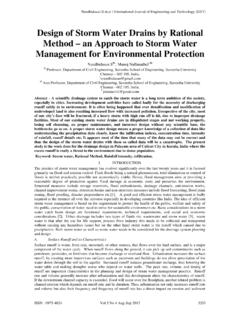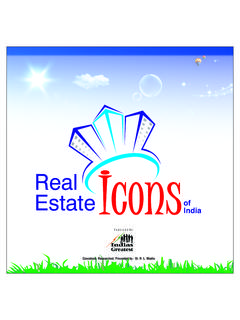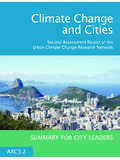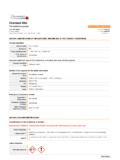Transcription of Pond Care AlgaeFix - API Fishcare
1 Mars (Mars Fishcare )Chemwatch Hazard Alert Code: 1 Pond care AlgaeFixChemwatch: 4658-10 Version No: Data Sheet according to OSHA HazCom Standard (2012) requirementsIssue Date: 01/01/2013 Print Date: 06/02/2014 Initial Date: Not 1 IDENTIFICATION OF THE SUBSTANCE / MIXTURE AND OF THE COMPANY / UNDERTAKINGP roduct IdentifierProduct namePond care AlgaeFixChemical NameNot ApplicableSynonymsSolution ID# 3504 Proper shipping nameNot ApplicableChemical formulaNot ApplicableOther means of identificationNot AvailableCAS numberNot ApplicableRelevant identified uses of the substance or mixture and uses advised againstRelevant identified usesUse according to manufacturer's directions.
2 , For product of the supplier of the safety data sheetRegistered company nameMars (Mars Fishcare )Address50 East Hamilton Street Chalfont 18914 PAUnited StatesTelephone+1 215 822 8181 Fax+1 215 822 1906 WebsiteNot AvailableEmailNot AvailableEmergency telephone numberAssociation / OrganisationNot AvailableEmergency telephone numbersNot AvailableOther emergency telephone numbersNot AvailableSECTION 2 HAZARDS IDENTIFICATIONC lassification of the substance or mixtureCHEMWATCH HAZARD RATINGSMaxMinFlammability0 Toxicity0 Body Contact0 Reactivity1 Chronic00 = Minimum1 = Low2 = Moderate3 = High4 = ExtremeGHS Classification[1]Acute Aquatic Hazard Category 3 Legend:1.
3 Classified by Chemwatch; 2. Classification drawn from EC Directive 67/548/EEC - Annex I ; 3. Classification drawn from EC Directive1272/2008 - Annex VILabel elementsGHS label elementsNot AvailableSIGNAL WORDNOT APPLICABLEH azard statement(s)H402 Harmful to aquatic lifePrecautionary statement(s): PreventionP273 Avoid release to the statement(s): ResponseNot ApplicablePrecautionary statement(s): StorageNot ApplicablePrecautionary statement(s): DisposalP501 Dispose of contents/container to authorised chemical landfill or if organic to high temperature incinerationSECTION 3 COMPOSITION / INFORMATION ON INGREDIENTSS ubstancesSee section below for composition of MixturesMixturesCAS No%[weight] dichloride, ethoxylateSECTION 4 FIRST AID MEASURESD escription of first aid measuresEye ContactIf this product comes in contact with eyes: Wash out immediately with water.
4 If irritation continues, seek medical attention. Removal of contact lenses after an eye injury should only be undertaken by skilled personnel. Skin ContactIf skin or hair contact occurs:Flush skin and hair with running water (and soap if available). Seek medical attention in event of irritation. InhalationIf fumes, aerosols or combustion products are inhaled remove from contaminated area. Other measures are usually unnecessary. IngestionImmediately give a glass of water. First aid is not generally required. If in doubt, contact a Poisons Information Centre or a doctor. Indication of any immediate medical attention and special treatment neededTreat 5 FIREFIGHTING MEASURESE xtinguishing mediaThere is no restriction on the type of extinguisher which may be used.
5 Use extinguishing media suitable for surrounding area. Special hazards arising from the substrate or mixtureFire IncompatibilityAvoid contamination with oxidising agents nitrates, oxidising acids, chlorine bleaches, pool chlorine etc. as ignition may result Advice for firefightersFire FightingUse water delivered as a fine spray to control fire and cool adjacent area. Do not approach containers suspected to be hot. Cool fire exposed containers with water spray from a protected location. If safe to do so, remove containers from path of fire. Equipment should be thoroughly decontaminated after use. Fire/Explosion HazardNon combustible. Not considered a significant fire risk, however containers may burn.
6 Decomposition may produce toxic fumes of:,carbon dioxide (CO2),other pyrolysis products typical of burning organic materialSECTION 6 ACCIDENTAL RELEASE MEASURESP ersonal precautions, protective equipment and emergency proceduresMinor SpillsClean up all spills immediately. Avoid breathing vapours and contact with skin and eyes. Control personal contact with the substance, by using protective equipment. Contain and absorb spill with sand, earth, inert material or vermiculite. Wipe up. Place in a suitable, labelled container for waste disposal. Major SpillsMinor area of personnel. Alert Fire Brigade and tell them location and nature of hazard. Chemwatch: 4658-10 Version No: 2 of 7 Issue Date: 01/01/2013 Print Date: 06/02/2014 Pond care personal contact with the substance, by using protective equipment as required.
7 Prevent spillage from entering drains or water ways. Contain spill with sand, earth or vermiculite. Collect recoverable product into labelled containers for recycling. Absorb remaining product with sand, earth or vermiculite and place in appropriate containers for disposal. Wash area and prevent runoff into drains or waterways. If contamination of drains or waterways occurs, advise emergency services. Personal Protective Equipment advice is contained in Section 8 of the 7 HANDLING AND STORAGEP recautions for safe handlingSafe handlingLimit all unnecessary personal contact. Wear protective clothing when risk of exposure occurs. Use in a well-ventilated area.
8 Avoid contact with incompatible materials. When handling, DO NOT eat, drink or smoke. Keep containers securely sealed when not in use. Avoid physical damage to containers. Always wash hands with soap and water after handling. Work clothes should be laundered separately. Use good occupational work practice. Observe manufacturer's storage and handling recommendations contained within this should be regularly checked against established exposure standards to ensure safe working conditions are maintained. Other informationStore in original containers. Keep containers securely sealed. Store in a cool, dry, well-ventilated area. Store away from incompatible materials and foodstuff containers.
9 Protect containers against physical damage and check regularly for leaks. Observe manufacturer's storage and handling recommendations contained within this for safe storage, including any incompatibilitiesSuitable containerPolyethylene or polypropylene container. Packing as recommended by manufacturer. Check all containers are clearly labelled and free from leaks. Storage incompatibilityAvoid reaction with oxidising agents PACKAGE MATERIAL INCOMPATIBILITIESSECTION 8 EXPOSURE CONTROLS / PERSONAL PROTECTIONC ontrol parametersOCCUPATIONAL EXPOSURE LIMITS (OEL)INGREDIENT DATANot AvailableEMERGENCY LIMITSI ngredientTEEL-0 TEEL-1 TEEL-2 TEEL-3 Pond care AlgaeFixNot AvailableNot AvailableNot AvailableNot AvailableIngredientOriginal IDLHR evised IDLHPond care AlgaeFixNot AvailableNot AvailableMATERIAL DATAE xposure controlsAppropriate engineering controlsEngineering controls are used to remove a hazard or place a barrier between the worker and the hazard.
10 Well-designed engineering controlscan be highly effective in protecting workers and will typically be independent of worker interactions to provide this high level of basic types of engineering controls are:Process controls which involve changing the way a job activity or process is done to reduce the and/or isolation of emission source which keeps a selected hazard "physically" away from the worker and ventilation that strategically"adds" and "removes" air in the work environment. Ventilation can remove or dilute an air contaminant if designed properly. The design of aventilation system must match the particular process and chemical or contaminant in may need to use multiple types of controls to prevent employee exhaust is adequate under normal operating conditions.









